Charcuterie guide
What is Charcuterie?
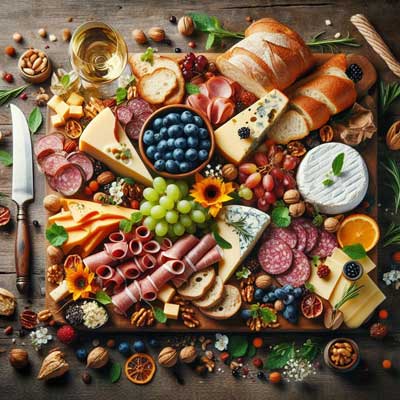
Charcuterie is the art of preparing and preserving meat products, typically pork, through various methods such as curing, smoking, and fermenting. It originated in France and has evolved over centuries to encompass a wide range of techniques and products.
Main Equipment Used in Charcuterie
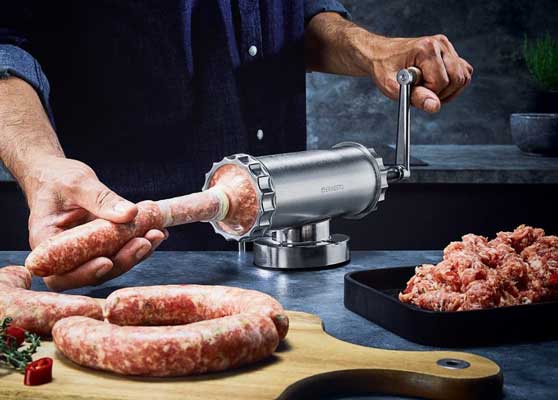
Charcuterie requires specific equipment for various processes. Some of the main equipment includes:
- Curing chamber
- Smoker
- Sausage stuffer
- Meat grinder
- Knife set
- Scale
- Meat slicer
- Food dehydrator
- Casings
Main Products of Charcuterie
Charcuterie offers a variety of products, each with its own unique flavor and texture. Here are the 10 most famous and consumed products worldwide:
- Salami: A cured sausage made from ground meat, typically pork, seasoned with various spices and herbs. It has a distinct flavor and is often sliced thinly for serving.
- Ham: A cured and sometimes smoked meat from the hind leg of a pig. It can be served cooked or uncooked and is enjoyed in various cuisines around the world.
- Chorizo: A spicy sausage originating from Spain or Portugal, typically made with pork, paprika, and garlic. It is often dried or smoked and adds a rich flavor to dishes.
- Bacon: A cured and smoked meat made from pork belly. It is known for its salty, savory flavor and crisp texture when cooked.
- Pâté: A smooth paste made from finely minced meats, often liver, combined with fat, herbs, and spices. It is typically spread on bread or crackers and served as an appetizer.
- Rillettes: A spreadable meat preparation made by slow-cooking meat, usually pork, in fat until tender, then shredding it and mixing with the cooking fat. It has a rich, savory flavor and is often served as a spread on bread or crackers.
- Pastrami: A highly seasoned, smoked meat, usually beef brisket, that is cured, seasoned with various spices, and then smoked. It is often thinly sliced and served in sandwiches.
- Mortadella: A large Italian sausage or luncheon meat made of finely hashed or ground heat-cured pork, flavored with spices, and studded with pieces of fat.
- Terrine: A French forcemeat loaf similar to a pâté, made with coarsely chopped ingredients such as meat, game, fish, or vegetables, mixed with spices and sometimes alcohol, and cooked in a covered pottery mold in a water bath.
What is Curing Salt?
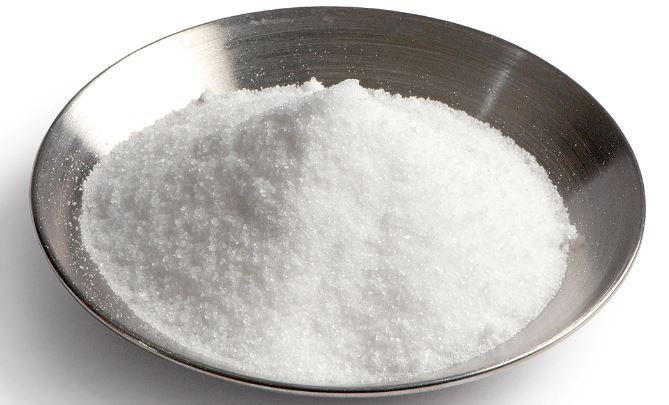
Curing salt, also known as Prague powder or pink salt, is a mixture of regular salt and sodium nitrite. It is used in charcuterie for several reasons:
- Preservation: Curing salt helps preserve meat products by inhibiting the growth of harmful bacteria, extending their shelf life.
- Color and Flavor Enhancement: It enhances the color and flavor of cured meats, giving them a desirable pink hue and characteristic taste.
- Food Safety: Curing salt contains sodium nitrite, which helps prevent the growth of botulism-causing bacteria, ensuring the safety of cured meats.
How to Smoke Salamis, Sausages, and Other Charcuterie Products?

Smoking is an important process in charcuterie that not only adds flavor to the products but also aids in preservation and developing complex textures. Here's a summary of the smoking process:
- Prepare the smoking chamber by ensuring it is clean and free from any debris.
- Choose the type of wood chips or chunks for smoking. Popular options include hickory, applewood, cherry, and mesquite.
- Soak the wood chips or chunks in water for at least 30 minutes before using them in the smoker.
- Preheat the smoker to the desired temperature, typically between 200°F and 250°F (93°C and 121°C).
- Place the salamis, sausages, or other charcuterie products on the smoker racks, leaving space between them for the smoke to circulate.
- Add the soaked wood chips or chunks to the smoker box or directly to the charcoal for smoke generation.
- Monitor the temperature and smoke levels throughout the smoking process, adjusting as needed to maintain a consistent temperature and smoke flow.
- Smoke the products for the recommended time, typically several hours, until they reach the desired flavor and texture.
- Once smoked, remove the products from the smoker and allow them to cool before packaging or further processing.
Purpose of Salami Fermentation
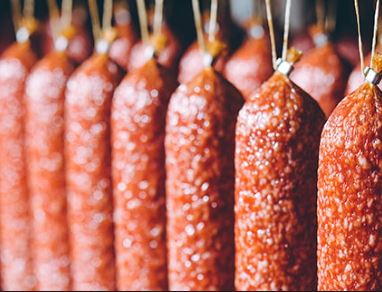
Fermentation is a crucial stage in the production of salamis. During fermentation, beneficial bacteria such as lactobacilli are added to the ground meat mixture. These bacteria perform lactic acid fermentation, converting sugars present in the meat into lactic acid.
The fermentation process serves several purposes:
- Develops flavor: Lactic acid fermentation produces tangy flavors that are characteristic of fermented meats.
- Improves texture: The acidification of the meat during fermentation helps break down proteins, resulting in a tender and flavorful final product.
- Enhances preservation: The acidic environment created by fermentation inhibits the growth of harmful bacteria, helping to preserve the salamis during the curing process.
Types of Natural, Collagen, Cellulose, and Polyamide Casings
Casings are used as natural or artificial wraps for sausages and other charcuterie products. Here are the main types of casings used:
Natural Casings

Made from animal intestines, such as hog, sheep, or beef intestines. They are known for their traditional appearance, texture, and ability to hold the shape of the product during cooking.
Collagen Casings
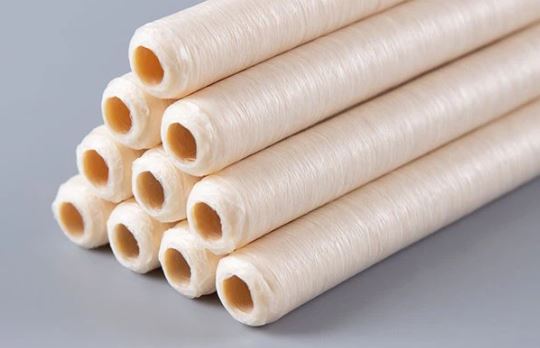
Made from the collagen found in animal hides and bones. They are uniform in size and shape, easy to use, and suitable for a wide range of sausage types.
Cellulose Casings
Made from plant-based cellulose fibers, typically derived from wood pulp. They are non-edible and are often used for cooked sausages, such as hot dogs, because they are easy to peel off after cooking.
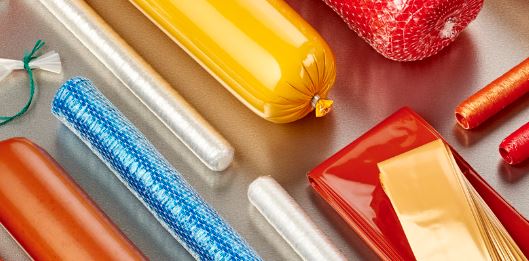
Polyamide Casings
Made from synthetic materials, such as nylon or polyester. They are strong, flexible, and suitable for high-speed production processes. Polyamide casings are often used for dry-cured sausages and salamis.
Ideal Temperature and Humidity for Salami Maturation Chamber
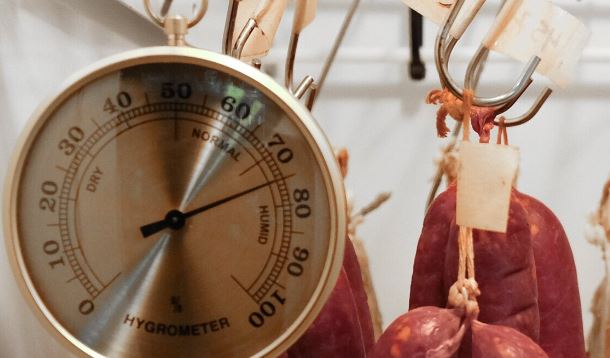
Salami maturation requires specific temperature and humidity conditions to ensure proper flavor and texture development. Here are the general guidelines:
- Temperature: The ideal temperature for salami maturation is typically between 55°F and 65°F (13°C and 18°C). This temperature range allows for the gradual breakdown of proteins and fats, resulting in a tender and flavorful salami.
- Humidity: The ideal humidity level for salami maturation is around 70% to 80%. This humidity range helps prevent the salami from drying out too quickly and allows for the growth of beneficial molds that contribute to flavor development.
Purpose of White Mold Culture in Charcuterie
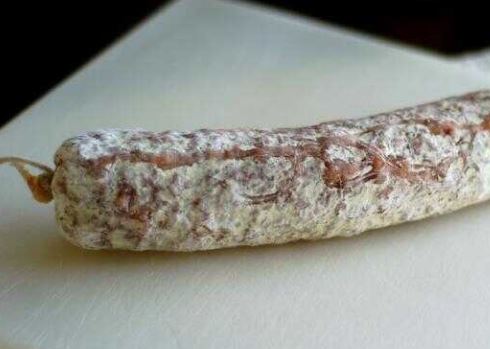
White mold culture is used in some sausages and charcuterie products for various reasons:
- Protection: The white mold forms a natural barrier on the surface of the product, protecting it from harmful bacteria and contaminants.
- Flavor enhancement: White mold contributes to the development of complex flavors and aromas in the charcuterie products, adding depth and richness to the final product.
- Appearance: The presence of white mold creates an attractive appearance on the surface of the product, giving it a distinctive and artisanal look.
- Texture: In some cases, white mold can also contribute to the texture of the product, creating a desirable rind or crust.
Main Additives and Their Functions in Charcuterie
Charcuterie uses a variety of additives to improve the quality, safety, and sensory characteristics of the products. Here are some of the main additives and their functions:
- Nitrite/Nitrate: Used as curing agents to preserve meat, enhance color, and prevent bacterial growth.
- Ascorbate: Aids in color development and prevents the formation of nitrosamines, which are potentially carcinogenic compounds.
- Phosphates: Improve water retention, texture, and juiciness of the meat products.
- Starter Cultures: Contains beneficial bacteria that ferment sugars to produce lactic acid, enhancing flavor, and extending shelf life.
- Antioxidants: Prevent oxidation of fats and proteins, maintaining the quality and freshness of the products.
- Flavor Enhancers: Such as MSG (monosodium glutamate), enhance the savory taste of the products.
- Binders: Improve the texture and moisture retention of the meat products.
- Anti-Caking Agents: Prevent clumping of ingredients and ensure uniform distribution in spice blends.